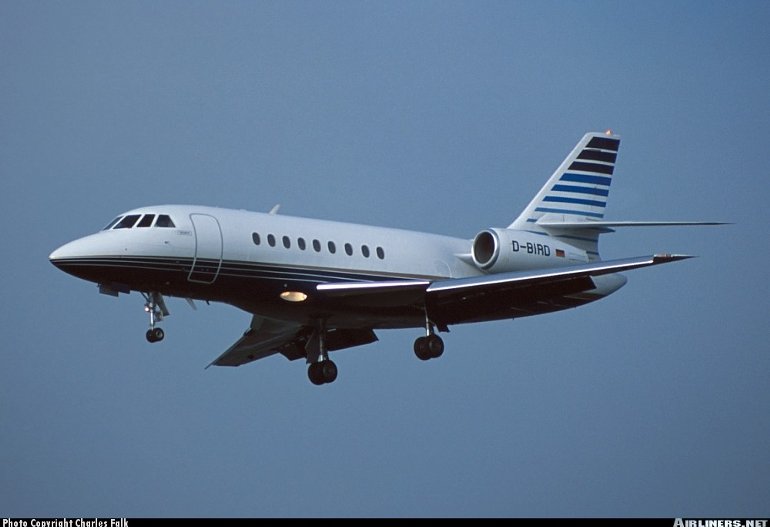Aircraft Technical Data
Dassault Falcon 2000

| Details | |
| Country of Origin | France |
| Type | Transcontinental range mid to large size corporate jet |
| History | The Falcon 2000 is the latest member of the Falcon business jet line, and is a transcontinental range, slightly smaller development of the Falcon 900 trijet <p>The Falcon 2000 shares the 900's wing and forward fuselage, but there are a number of design changes. From the start the Falcon 2000 was designed with a range of 5560km (3000nm) in mind, which is less than the transcontinental 900's range. This design range removed the need for the redundancy of three engines for long range overwater flights, allowing the two new CFE738 engines to be fitted, which offer considerable maintenance and operating economics benefits. The CFE738 engine was developed specifically for the Falcon 2000 by a partnership of General Electric and AlliedSignal, known as CFE. Meanwhile, the 2000's fuselage is 1.98m (6ft 6in) shorter than the 900's and so houses less fuel, passengers and baggage. <p>Another noticeable design change between the 900 and 2000 is the area ruled rear fuselage. Dassault engineers found that the three engine layout of the 900 to be aerodynamically efficient, whereas the twin engine design of the 2000 originally would have been comparatively draggy. To combat this and reduce drag to desired levels Dassault designed an area ruled (or Coke bottle) rear fuselage, using its Catia three dimensional computer aided design program. <p>Changes to the wing include a modified leading edge and the inboard slats have been removed, while the cockpit features a Collins four screen EFIS avionics system with optional Flight Dynamics head-up displays (allowing hand flown approaches in Cat II and Cat IIIa conditions). <p>Dassault has a number of industry partners in the Falcon 2000 program, foremost of these being Alenia, which is a 25% risk sharing partner. Alenia in turn has subcontracted some work to Dee Howard and Piaggio. <p>Dassault announced it was developing the Falcon 2000, then known as the Falcon X, in June 1989. First flight occurred on March 4 1993 and certification was awarded in November 1994. The first customer delivery occurred in March 1995. |
| Powerplants | Two 25.6kN (5725lb) CFE (General Electric & AlliedSignal) CFE73811B turbofans. |
| Performance | Max cruising speed at 39,000ft Mach 0.83-0.85. Max certificated altitude 47,000ft. Range at 0.80 Mach cruising speed with eight passengers 5560km (3000nm), at 0.75 Mach 5788km (3125nm) |
| Weights | Empty equipped 9405kg (20,735lb), max takeoff 16,238kg (35,800lb). |
| Dimensions | Wing span 19.33m (63ft 5in), length 20.23m (66ft 5in), height 7.06m (23ft 2in). Wing area 49.0m2 (527.6sq ft). |
| Capacity | Flightcrew of two. Main cabin seating typically for eight passengers, or up to 12 in a high density layout. |
| Production | First customer delivery occurred in March 1995. Over 60 delivered by late 1998. |
| Related Links | Dassault Falcon 2000 |
The backbone of this section is from the The International Directory of Civil Aircraft by Gerard Frawley and used with permission. To get your own copy of the book click here. |
|








